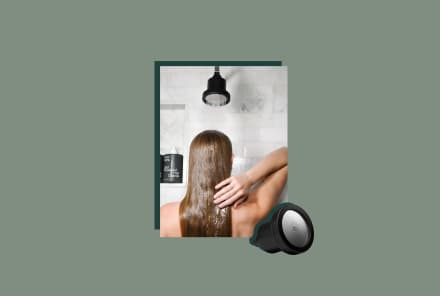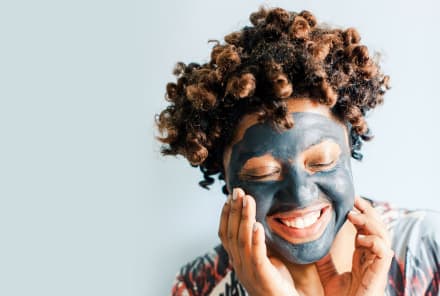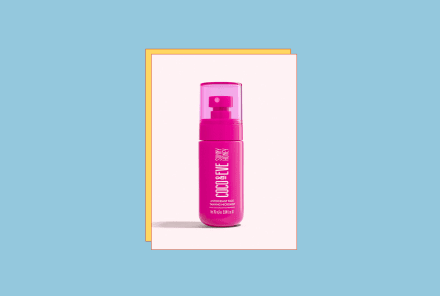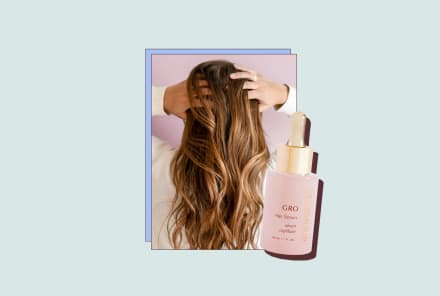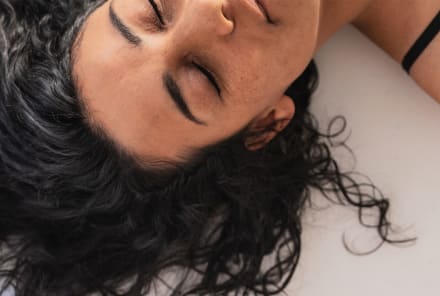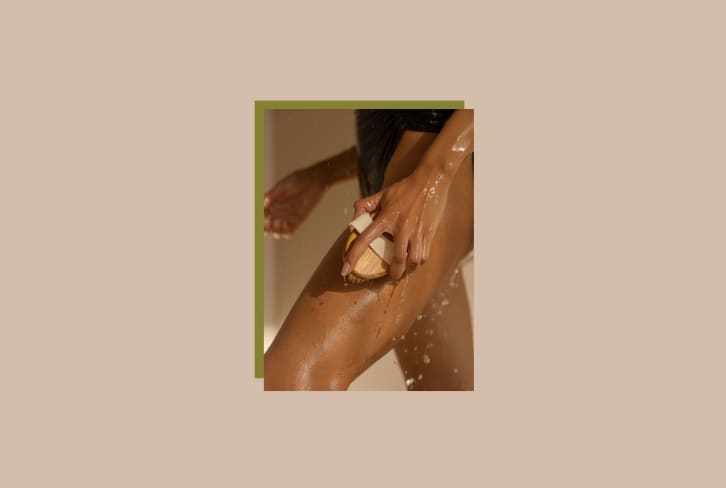Advertisement
How To Budget For & Make Smart Wellness Purchases

Hannah Frye is the Assistant Beauty Editor at mindbodygreen. She has a B.S. in journalism and a minor in women’s, gender, and queer studies from California Polytechnic State University, San Luis Obispo. Hannah has written across lifestyle sections including health, wellness, sustainability, personal development, and more.

Wellness isn't something that can be flat-out bought. That being said, certain investments, whether it be for mental, physical, or spiritual wellness, do come with a price tag. And given all of the information thrown at you on a daily basis, choosing where to spend and where to save isn't an easy task.
Here, financial expert and money coach Haley Kowalewski (aka @femmefinancialcoaching on Instagram) tells mbg exactly how to create the ultimate wellness budget because investing in your health and well-being is important—but it shouldn't be stress-inducing.
Decide where wellness purchases fall in your priorities list.
First things first—determine what wellness activities and products you're considering. A list of some frequently financially hefty investments:
- Gym memberships or subscriptions
- Facials, massages, etc.
- Therapy (talk therapy, reiki, etc.)
- Cosmetics (skin care, makeup, hair care, etc.)
- Supplements
- High-quality foods and groceries
- Nutrition or wellness coaches
Once you have your list of well-being priorities, decide which ones are must-haves and which ones are nice-to-haves. For some folks, eating a balance meal of whole foods is a non-negotiable, while others need their gym memberships.
Some people prioritize wellness more than others, and that's OK. "Investing in your health is super, super important," Kowalewski reiterates. However, she notes that money going into your wellness budget will have to come out of something else, so keep that in mind.
Action item:
Figure out what's worth splurging on.
Not every wellness product or activity is splurge-worthy, especially for those trying to save a few bucks. As mentioned above, wellness marketing can easily convince you that nothing is DIY-able, but some things most certainly are.
Therapy? Not DIY-friendly. A turmeric and honey face mask? Definitely something you can whip up on your own if you're looking to save $50. In order to figure this out, run through your list of wellness activities and products while pondering these questions:
- Can I make or do this myself safely and effectively? (Editor's note: Safely and effectively are very important words here.)
- Is this something that genuinely affects my health for the better (be it mental, physical, or spiritual)?
- Is this something I need to be doing or buying every month, or can it be a bimonthly investment?
Action item:
Don't impulse buy big purchases
As mentioned above, you should be asking yourself what value a product or service will bring into your life in order to make a financially smart decision. However, there's another trick Kowalewski swears by: Don't purchase something the first time you're seeing it or thinking about it.
If you're online shopping, leave the item in your cart for at least 24 hours before purchasing. If you're at the store, come back a day or two later if you feel pulled. If you keep thinking about something (not just seeing it in an advertisement), "That's when you know you really want it," Kowalewski says.
This will help you avoid targeted ads that try to convince you that you absolutely need something you didn't even know about a few minutes earlier. Remember that your investments, especially big ticket items, should be filling a gap or providing substantial value to your well-being.
Action item:
Use well-being focused perks
Using points to your advantage is a great way to get perks that enrich your life. Lots of folks use points to the advantage when booking travel—well, you can do the same with your wellness purchases as well.
For example, when using wellness-focused credit card Ness you can earn 5-times the points when you use the card with any of their wellbeing vendors.
It's worth checking out the entire list, but a few notable include grocery stores and nutrition support (like Whole30, Whole Foods, Trader Joes, several supplement companies, and even meal delivery kits), gyms and studios (like Equinox, Lifetime, and Soul Cycle), health insurance costs, therapy, sleep aids, and even beauty products. Then you can redeem your points with their partners for freebies.
Recently, it was just announced that Ness became the "official card" of Whole30, which means you can earn points when using the card on Whole30-approved restaurants and brands.
Action item:
Try new things commitment-free when possible.
"Always look for promotions," Kowalewski says. Whether it be trying out a new gym, testing a product and actually committing to the money-back guarantee on the label, or searching on coupon websites for deals—there's so much room to save by testing things first.
This will help you avoid overcommitting to something you're not even sure you're going to find worthy of your money. What's more, you'll have a chance to try out different products and experiences to find the best one for you rather than settling for what you may have pre-invested in.
The hardest part, Kowalewski warns, is learning to separate what you want from what those around you want. If your best friend pays $500 a month for a gym membership but you only have time to go with them once or twice a week, it's probably not worth the price for you—even if it is for them.
Kowalewski frequently reminds her clients that while you may not know this at first, many membership and subscription-based services have a variety of commitment levels. You don't have to be all in, all the time. Especially if you're in the early stages of trying something new, it's best to go with the most affordable option and work your way up.
Action item:
When possible, plan it out.
If there's a service you want, a wellness retreat you want to go on, or an expensive item you're excited about buying, save up for it. Every month, put aside a bit of money toward this expense and plan it out (read: physically write it down) to ensure you'll have the amount in full by the date of payment.
Not only will this show how much you truly want (or don't want) the item or experience, but it will also help you avoid going into debt. If you impulse buy something out of your budget, you'll be paying it off for months to come. Not to mention, the stress of credit card debt won't exactly positively contribute to your well-being.
Action item:
The takeaway.
Wellness-focused products and experiences can certainly bring value to your life and spark joy. It's important to invest in your health but to do it mindfully. With these tips in mind, you'll be able to create a wellness budget that works for you, not against you.
Remember: The goal is well-being, so anything that is inducing financial anxiety might not be worth your hard-earned money.
Watch Next
Enjoy some of our favorite clips from classes
Enjoy some of our favorite clips from classes
What Is Meditation?
Mindfulness/Spirituality | Light Watkins
Box Breathing
Mindfulness/Spirituality | Gwen Dittmar
What Breathwork Can Address
Mindfulness/Spirituality | Gwen Dittmar
The 8 Limbs of Yoga - What is Asana?
Yoga | Caley Alyssa
Two Standing Postures to Open Up Tight Hips
Yoga | Caley Alyssa
How Plants Can Optimize Athletic Performance
Nutrition | Rich Roll
What to Eat Before a Workout
Nutrition | Rich Roll
How Ayurveda Helps Us Navigate Modern Life
Nutrition | Sahara Rose
Messages About Love & Relationships
Love & Relationships | Esther Perel
Love Languages
Love & Relationships | Esther Perel


